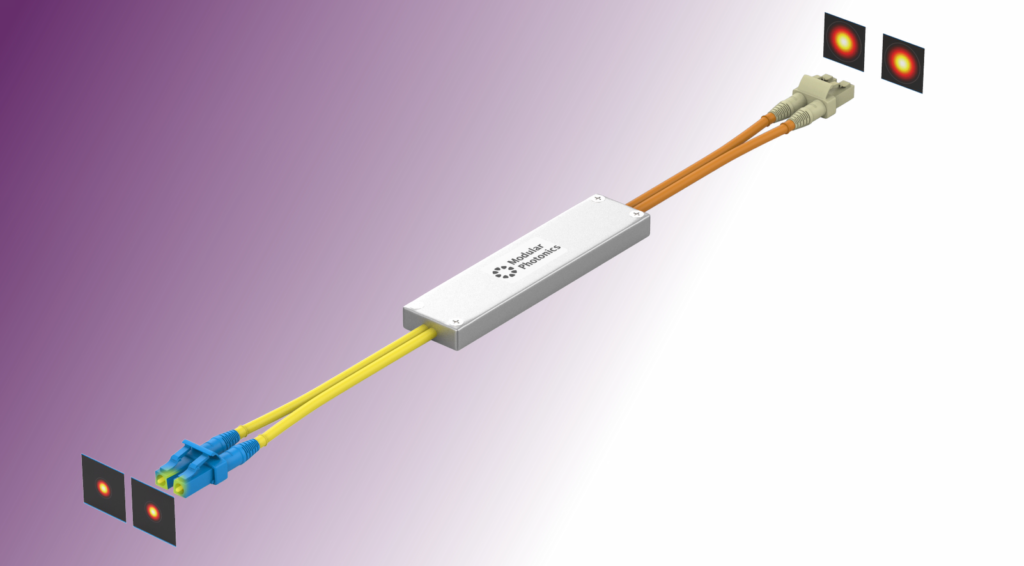The use of optics for data transmission in local area networks has seen the emergence of many different types of multi-mode optical fibre over the past 30 years. This started with 100 micron core fibre followed with the OM1 fibre standard back in 1989. OM1 fibres are graded-index fibres with a 62.5 µm diameter core and a numerical aperture of 0.275, featuring an overfill launch (OFL) bandwidth of 200 MHz × km at 850 nm wavelength. The large core and large numerical aperture of OM1 fibres facilitated efficient coupling of light from LEDs into the fibre as for instance used in 622 Mbps transceivers. With the requirement for increased data rates a new type of graded-index fibre, OM2, was standardized in 1998 to enable Gigabit Ethernet using lasers as a source rather than LEDs. Unlike OM1 fibres, the OM2 fibre features a smaller 50 µm graded index core and a lower numerical aperture of 0.2 but a larger OFL bandwidth of 500 MHz × km to accommodate for the increased data rates. With the emergence of 10 Gigabit Ethernet a new type of fibre was required, so-called laser optimized OM3. The fibre was standardized in 2002 and features identical core diameter and numerical aperture as OM2 fibres, however careful design of the graded-index profile enables an increased OFL bandwidth of 2000 MHz × km. The introduction of 40 Gigabit Ethernet and 100 Gigabit Ethernet saw yet another improvement of the 50 µm core graded-index fibres, namely OM4. The OM4 standard was released in 2009. The fibre is designed to feature an OFL bandwidth of greater than 4700 MHz × km. The latest type of 50 µm core multi-mode graded-index fibre is OM5, which has been designed for transceivers using short wavelength division multiplexing (SWDM) across four wavelength bands of 850, 880, 910 and 940 nm. This enables 40G and 100G transmission across a single fibre-pair. While this fibre has only recently been standardized, the industry is already working on an improved fibre type to extend the operational wavelength windows beyond 1000 nm.
This highlights the constant evolution of multi-mode fibre, with on average a new standard every 7 years. However, for the data centre or network operator this also means that costly re-cabling is required if their cable plant is not compatible with the latest generation of transceivers. Modular Photonics through its OMPlex series provides a cost-effective alternative to re-cabling. By using a pair of OMPlex devices in conjunction with single-mode transceivers, even across 40 years old OM1 fibres 100G transmission can be achieved. OMPlex devices only operate on the physical layer. They are entirely transparent to the protocol, whether it be Ethernet or Fibre Channel. Furthermore, they are passive, requiring no electrical connection. Furthermore, the OMPlex devices can be connected directly to the existing cable plant. The low insertion loss of OMPlex devices enables the use of cost-efficient long-range single-mode optics.

Figure 1: Modular Photonics’ OMPlex Pro allows for single-mode transceivers to be used on OM multi-mode fibre.




